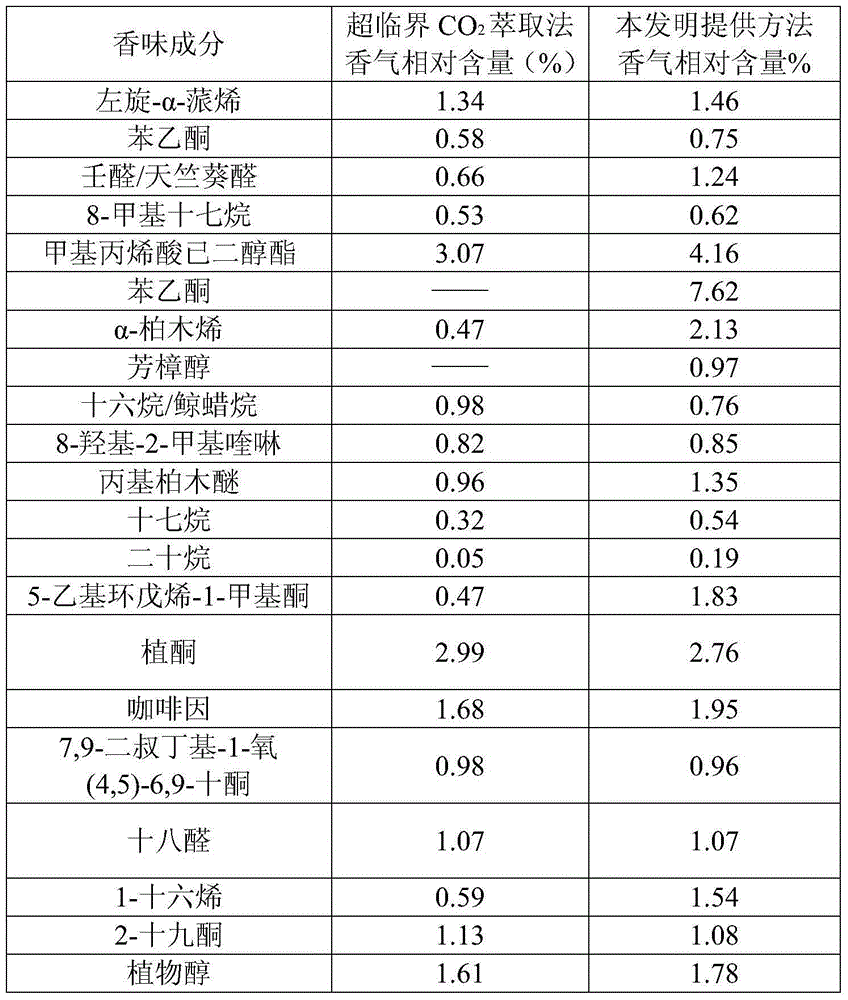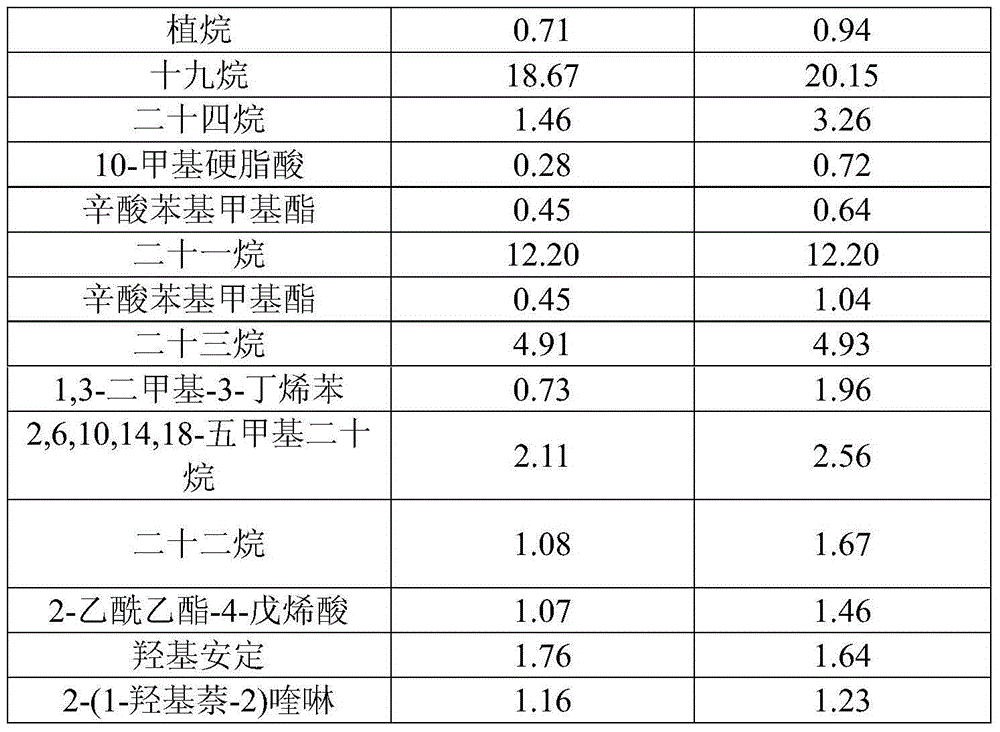Method for preparing tea tree flower essential oil
A technology of tea tree flowers and essential oils, applied in the directions of essential oils/spices, fat production, etc., can solve the problems of high operation cost, organic reagent pollution, low yield of essential oils, etc., and achieve the expansion of mass transfer area, rapid recovery, and extraction yield. high effect
- Summary
- Abstract
- Description
- Claims
- Application Information
AI Technical Summary
Problems solved by technology
Method used
Image
Examples
Embodiment 1
[0027] (1) Weigh 10 kg of dried camellia flowers (derived from Anji white camellia, and the tea tree flowers in the following examples are all Anji white camellias), pulverize them with a pulverizer, and add 100 L of distilled water, hydrogen phosphate according to the amount of tea tree flowers: water is 1:10 Adjust the pH value of disodium-sodium dihydrogen phosphate buffer to 4.0; heat the temperature to 45°C; The compound enzyme system enzymatically hydrolyzes the tea tree flower material for 2 hours;
[0028] (2) Transfer the above-mentioned enzymatically hydrolyzed slurry to a rotating cone distillation column (SCC), and add 0.5‰ polyethylene glycol to the slurry;
[0029] (3) The operating conditions of SCC equipment are: material feed flow rate: 350L / h; rotating cone speed: 200r / min; vacuum degree: 40kPa; steam flow rate: 25kg / h; primary condensation temperature: 30°C; The secondary condensation temperature is: 5°C; distillation is carried out to recover the tea tree ...
Embodiment 2
[0032] (1) Weigh 10 kg of camellia flowers, add 50 L of distilled water according to the ratio of tea tree flowers: water 1:5, make pulp, adjust the pH value of disodium hydrogen phosphate-sodium dihydrogen phosphate buffer to 4.5; heat to 45 °C; According to the ratio of β-glucosidase: cellulase: pectinase of 1:0.5:0.5, add 60U / kg feed liquid compound enzyme system to enzymatically hydrolyze the tea tree flower material for 2 hours;
[0033] (2) Transfer the above-mentioned enzymatically hydrolyzed slurry to a rotating cone distillation column (SCC), and add 0.5‰ polyethylene glycol to the slurry;
[0034] (3) The operating conditions of SCC equipment are: material feed flow rate: 350L / h; rotating cone speed: 200r / min; vacuum degree: 40kPa; steam flow rate: 25kg / h; primary condensation temperature: 30°C; The secondary condensation temperature is: 5°C; distillation is carried out to recover the primary condensed tea tree flower aroma extract and the secondary condensed tea tre...
Embodiment 3
[0037] (1) Weigh 10kg of dried camellia flowers, pulverize them with a pulverizer, add 200L of distilled water according to the ratio of tea tree flowers: water 1:20, adjust the pH value of disodium hydrogen phosphate-sodium dihydrogen phosphate buffer to 5.0; heat to 50°C ;According to the ratio of β-glucosidase: cellulase: pectinase of 1:0.5:0.2, add the compound enzyme system of 40U / kg feed liquid to enzymolyze the tea tree flower material for 2h;
[0038] (2) Transfer the above-mentioned enzymatically hydrolyzed slurry to a rotating cone distillation column (SCC), and add 0.5‰ of GPE20 to the slurry;
[0039] (3) The operating conditions of SCC equipment are: material feed flow rate: 500L / h; rotating cone speed: 350r / min; vacuum degree: 50kPa; steam flow rate: 30kg / h; primary condensation temperature: 30°C; The secondary condensation temperature is: 5°C; distillation is carried out to recover the tea tree flower aroma extract;
[0040] (4) Separation by an oil-water separ...
PUM
 Login to View More
Login to View More Abstract
Description
Claims
Application Information
 Login to View More
Login to View More - Generate Ideas
- Intellectual Property
- Life Sciences
- Materials
- Tech Scout
- Unparalleled Data Quality
- Higher Quality Content
- 60% Fewer Hallucinations
Browse by: Latest US Patents, China's latest patents, Technical Efficacy Thesaurus, Application Domain, Technology Topic, Popular Technical Reports.
© 2025 PatSnap. All rights reserved.Legal|Privacy policy|Modern Slavery Act Transparency Statement|Sitemap|About US| Contact US: help@patsnap.com


